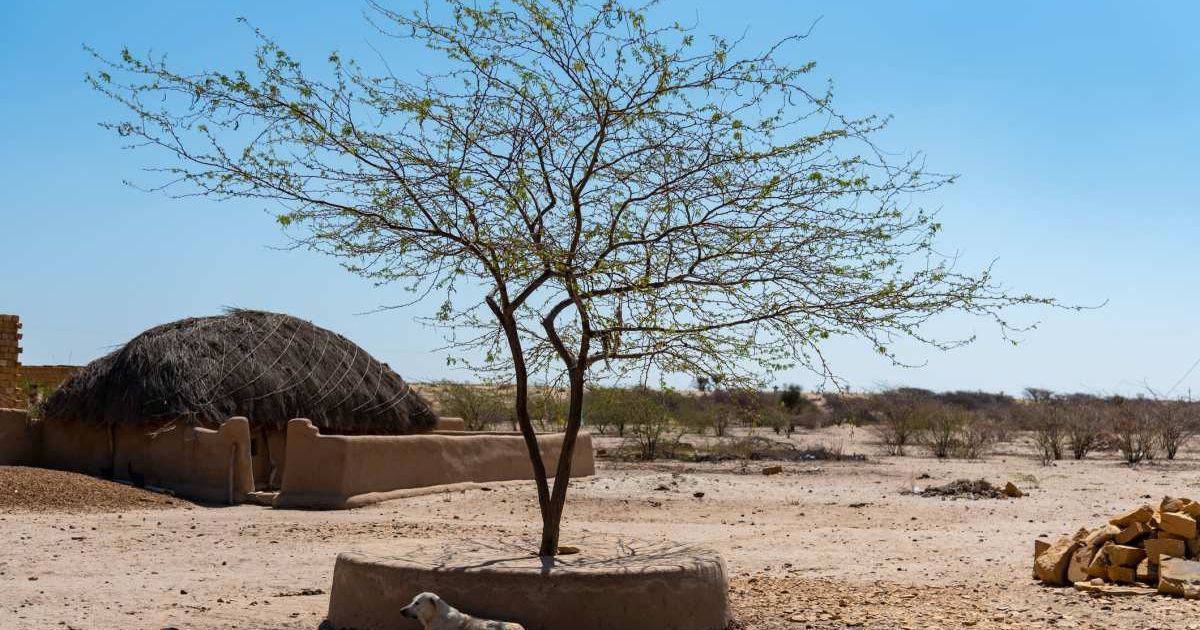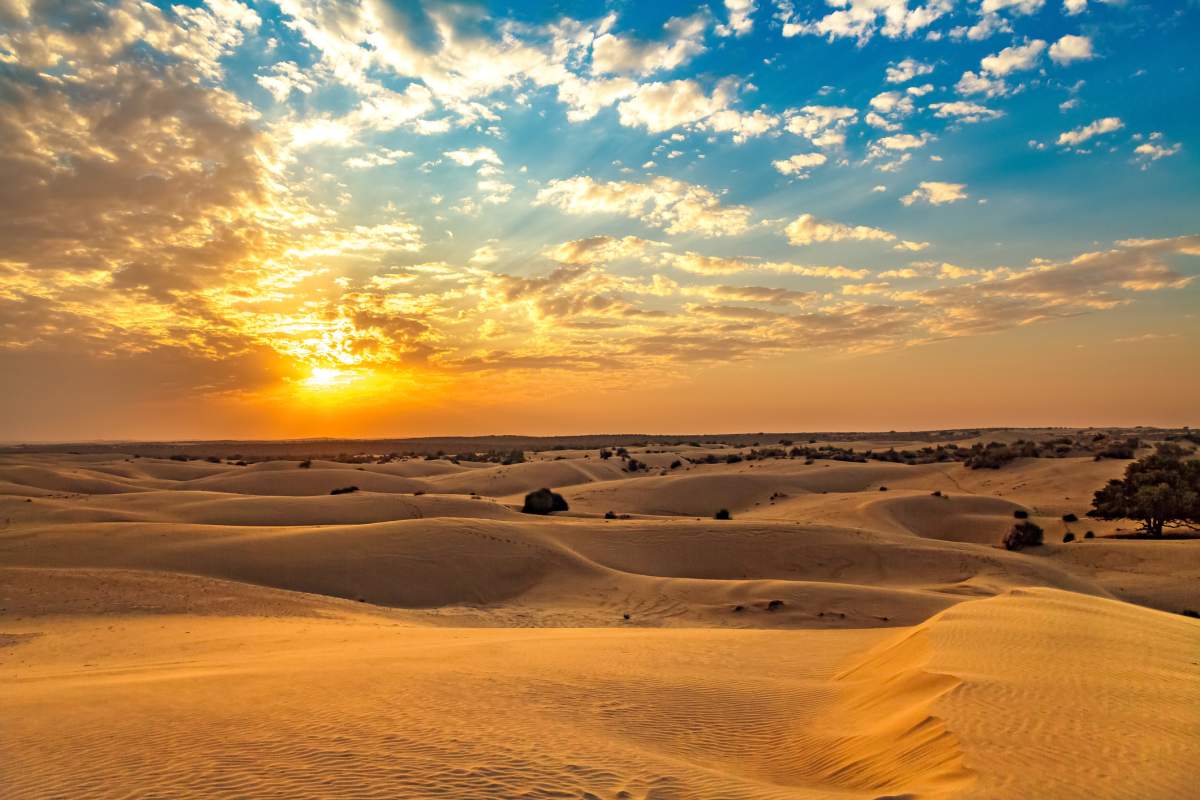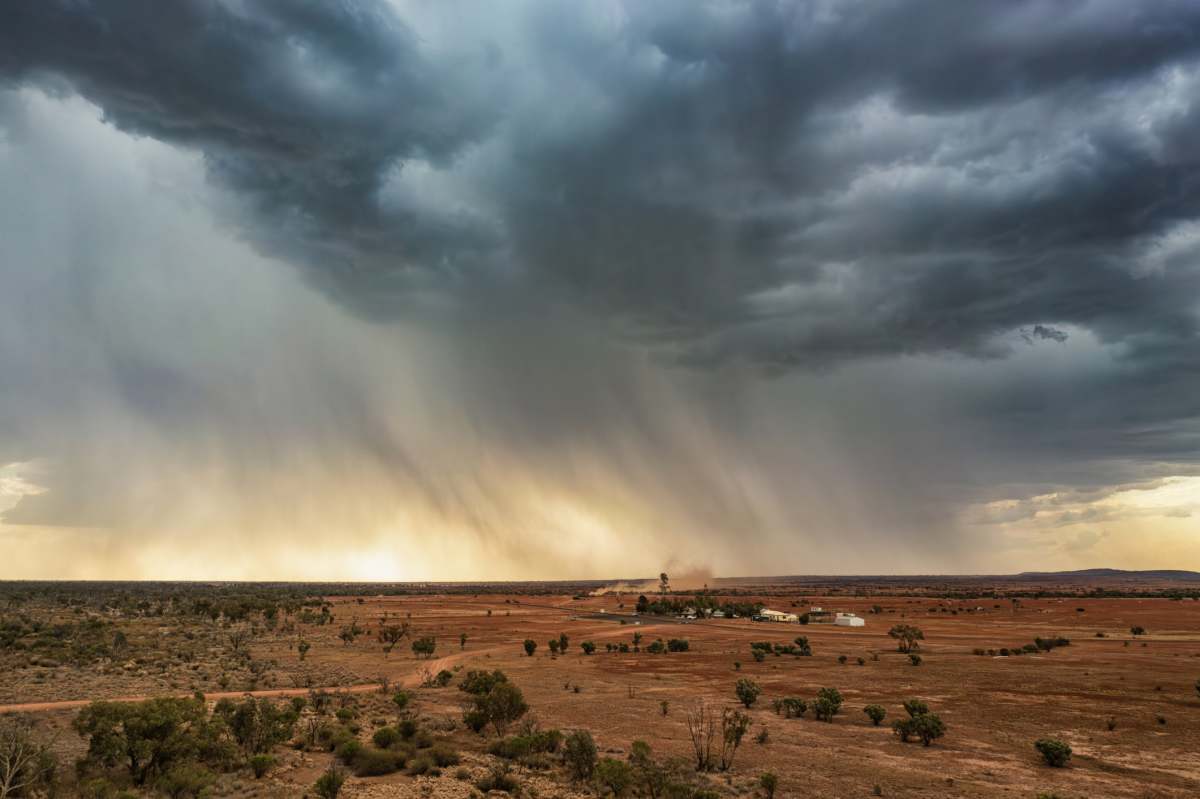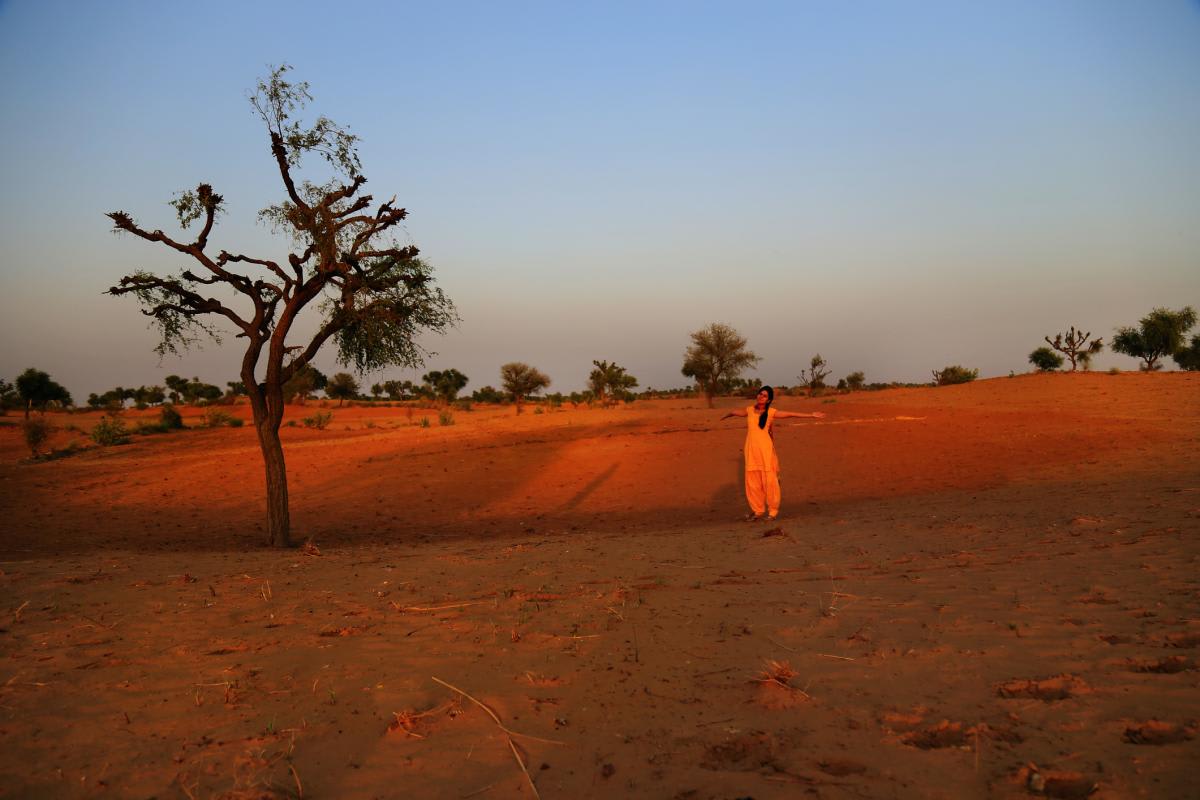This Huge Desert in Asia Has Turned Nearly 40% Greener — but Experts Say There’s a Downside to It

Bordered by the Indus plain in the West and the Rann of Kutch to the South, hardy, drought-ridden structures jut upwards from the silken sands of India’s Thar Desert. Bushes of gum, acacia, akra, and other desert plants rise out of the sand, some of them clinging to the sandy dunes. Whipping winds lash the beds of sand, picking it up like a swarm of bees while the Aravalli mountains stand firm in the backdrop. Adding to its photographic beauty, the desert is now also showing signs of greenery more than ever, according to a new study published in the journal Cell Reports Sustainability.

The Great Indian Desert

Spread across northwest India as an expansive stretch of 77,000 square miles, the Thar Desert is one of the major hot deserts of the world with the highest population density, according to the BBC. Also known as the Great Indian Desert, it is punctuated with windmills that churn out copious amounts of electricity. Quarries of feldspar, phospherite, gypsum, kaolin, limestone, and marble dotted throughout the desert are dug and mined by engineers to scour materials for gardening fertilizers and cement that glues up their towering buildings in urban cities.
Satellite data

Researchers analyzed satellite data from 2001 to 2003 and found that Thar has become “38% greener” over the past two decades, driven by various factors related to climate change. They analyzed historical data archives related to the desert’s population expansion, irrigation infrastructure, and climate change to figure out the exact reason why this was happening.
Increased rainfall

The first reason that was revealed was the significant increase in the monsoon precipitation between 2001 and 2003. 64% to be precise. “The increased rainfall during the monsoon season is the primary driver of greening, while non-monsoon season greening is mainly attributed to groundwater pumping,” researchers noted in the study. "Increased water and energy availability have led to expansion in agricultural and urban areas with a considerable increase in crop yields in the region," study co-author Vimal Mishra, a civil engineer at the Indian Institute of Technology Gandhinagar, told Live Science, adding that, "There is no other desert in the world that has experienced increases in urbanization, agriculture, and precipitation during the recent period.”
Rapid expansion of agriculture

However, another factor that came to the picture can easily neutralize this lush greening: the rapid expansion of irrigated agriculture driven by groundwater pumping. A mushrooming population would prompt an erratic overuse of the groundwater wells. Rainwater would seep out. Livelihoods of billions of people would be threatened, as well as the food security of locals residing in sandy cities like Jaisalmer and Rajasthan.
Sustainable management practices
It’s not that bad, though. With proper and sustainable management of available resources, the problem can be easily tackled. For example, using drought-resistant crops, developing practices to adapt to the rising heat, and building renewable energy resources are some of the methods. Another factor that scientists warned about is rainfall. As the rainfall rate increases, the desert could become a victim of flooding.

Besides, researchers have predicted that Thar could become totally green by the end of the 21st century. This prediction, though, can be looked at from both positive and negative perspectives. While the greening would boost the food security in the area, it could threaten the native biodiversity, the plants that are not adapted to survive in the scorching hot environment of the desert.
More on Green Matters
Scientists Are Worried After Google Earth Captured a 2-Mile-Long Crack in the Arizona Desert